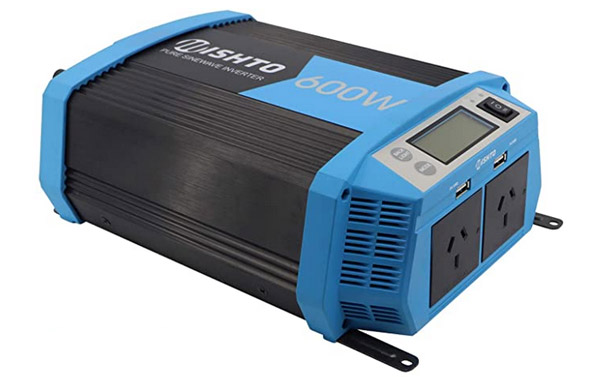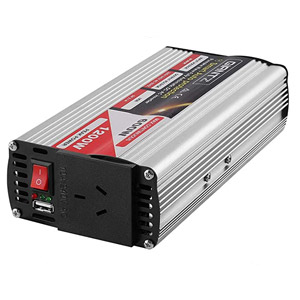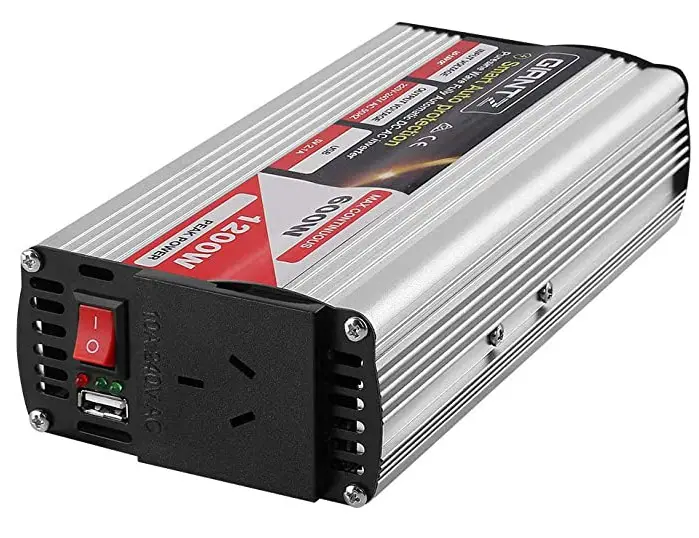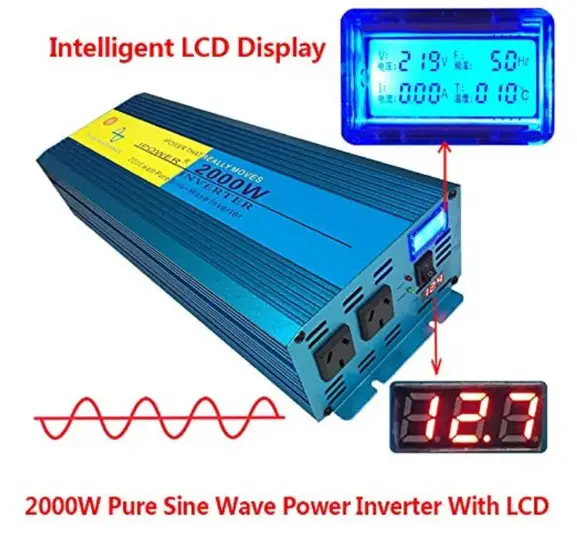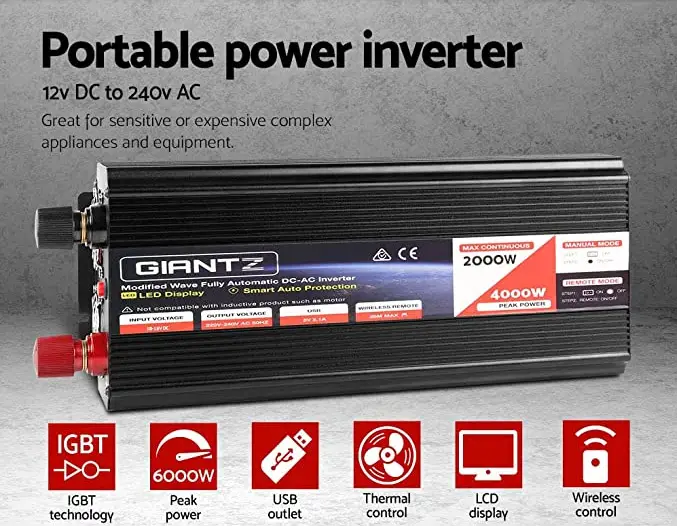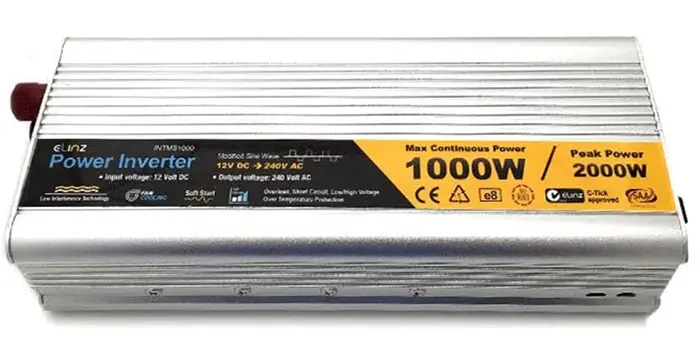Convert 12v to 240v on your next camping trip with these great products!
With many of life’s creature comforts, they are often powered by 240 volts of power. This is not very helpful when you want to go camping and only have a 12 volt battery to run things off. This is where a 12v to 240v inverter comes in handy.
So rather than relying on 12v products such as kettles and fans on your next camping trip, a 240v inverter will allow you to simply plug in your standard 240v powered products and away you go! But what is the best 12v to 240v inverter available? Let’s take a look.
Let’s get straight into our inverter comparison and reviews. In our opinion, the best 12v to 240v inverters for camping are:
- GIANTZ 600W/1200W Pure Sine Wave Power Inverter 12V-240V Camping Boat Caravan – Best for Price
- Cantonape 2000W/4000W(Peak) Pure Sine Wave Power Inverter DC 12V to 240V AC with LCD Display for Car Boat RV Solar Power – Best for usability
- Power Inverter 600W 1200W Solar Controller Charger 20A Pure Sine Wave 12V 240V – Best Features
- Power Inverter, Giant 2000W 12V To 240V Car Inverter – Best for fast charging
- Elinz 1000W / 2000W 12V-240V Power Inverter – Best for budget buyers
Buying Guide for choosing the perfect power inverters
There are a lot of factors you need to consider before buying a power inverter. They are:
Factors to keep in mind before buying a power inverter
Power consumption:
Before you start looking to buy an inverter, the first thing that you need to do is find the approximate consumption of your total power consumption. Make a list of all the things you would need to power with the help of the inverter. You have to keep in mind that an inverter and a generator are two different things. An inverter cannot run all the electrical appliances of your home when the electricity goes out. You would want to choose things that are important. First, you need to find out the combined load that your inverter would be consuming so you can buy an inverter that is capable enough to do that. Popular use cases include recharging camping lanterns or headlamp torches, powering camp lights, running televisions or camping fridges.
Wattage
Low wattage devices are often cheaper and smaller as compared to high wattage devices. Typically, such devices have a single USB port and an electrical plug. You can even plug them into a car’s dashboard and charge a device while you are driving. High wattage power inverters, on the other hand, are powerful enough to run high demand electrical appliances like heaters and vacuum cleaners. Such inverters are usually large in size.
The difference between an inverter and a UPS
On the outside, it may seem like both, an inverter and a UPS are the same. Both of the devices are used to convert direct current into alternate current so it can be used to generate power. The difference between them, however, is that in the case of a UPS, there is no time lag in the devices which are powered off when there is a power cut and the turned on again. But in the case of an inverter, there is a very short period of time when there is a complete blackout. This is exactly why most of the laptops and PCs are connected with UPS instead of an inverter so that important data is not lost in case of a power cut.
VA ratings
While VA ratings and watt ratings may seem similar, but do not be mistaken. There is a difference between them. Appliances such as bulbs, refrigerators, air conditioners, and lights are everyday appliances that you use in your home consume power. That is why they are measures in Watts. On the other hand, power generating devices such as inverters, UPS and generators are rated in VA. VA is the product of the voltage and the current being supplied by the equipment.
Sine Waves
Power inverters produce either of the following two types of wave outputs:
- Modified Sine Wave
- True Sine Wave
The former, modified sine wave inverters deliver power that is both, consistent and efficient enough to run appliances without any trouble. Inverters that use this type of wave outputs are popular and affordable since they happen to be small in size and highly efficient. On the other hand, true sine wave inverters are more expensive than modified sine way, but they also deliver wave output of the highest quality and they are also consistent. Certain sensitive equipment such as laptops, computers, medical devices and audio/video equipment are suitable for true sin wave.
Battery
The battery is an essential part of an inverter. Both the performance of an inverter and its life depends on the quality of the battery. Battery capacity is another thing that you should keep in mind before making a decision to buy an inverter. Battery capacity decides how many backup hours the inverter is going to provide. It is expressed in Ah, short for Ampere Hours. Some of the most common Ah values of a battery are 100, 120, 150, 180, and 200. The higher the value of Ah is going to be, the stronger the battery would be. If the battery isn’t powered enough, it wouldn’t run a lot of electrical appliances.
Warranty
The last thing that you should consider before choosing an inverter is the warranty of the inverter. If your inverter has a higher warranty, it indicates the that your inverter has a long-lasting battery life, it is energy efficient and better accuracy. Moreover, it also means that your inverter is manufactured with the help of superior and durable materials. A lot of brands of inverters allow you to send back a model for service and maintenance, on a regular basis. This factor is very important as it increases battery life and backup support of the inverter.
Note: If you install an aftermarket inverter in your caravan, be sure it will not void your caravan insurance.

